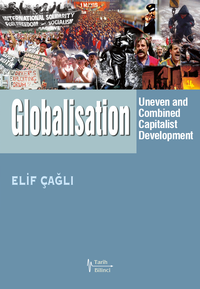In an effort to escape the fact that economic crises are inherent in capitalism, bourgeois economics has long claimed that crises are completely accidental, resulting from factors such as fluctuations in wages and prices. Yet, such fluctuations are not the cause but the result of the boom-crisis cycle as both wages and prices are generally dependent on the course of economic development. Capitalism contains within itself the possibility of crisis, which manifests itself in the form of overproduction. It is not some incidental factors that play the decisive role in turning possibility into reality, but some fundamental laws inherent in capitalism. The law of the tendency of the rate of profit to fall occupies a central position with respect to the outbreak of capitalist crises. Marx points out that this tendency “is the most important law of modern political economy, and the most essential one for comprehending the most complex relationships. It is the most important law from the historical viewpoint.”[7] In the course of capital accumulation, the tendency of the rate of profit to fall exacerbates competition between capitalists, and thus ferments crises.
Marx was not the first to point out the fall of the profit rate. Classical economists such as A. Smith and D. Ricardo had already dealt with this subject, yet they had failed to offer a correct explanation. The basic mistake of these classical economists was their inclination to regard the fall as a result of a decline in labour productivity. Marx, on the contrary, discovered that the profit rate showed a tendency to fall because of increasing labour productivity. In fact, the key factors that determine the profit rate were the fluctuations in the rate of surplus value, the fluctuations in the organic composition of capital, and the fluctuations in the turnover rate of capital. Marx criticized Ricardo for regarding the profit rate as a linear function of wage fluctuations. Contrary to Ricardo’s analysis, profit rate can rise while real wages are also rising and it can fall while the latter is falling.
Marx pointed out Ricardo’s false assumption that the rate of profit and the rate of surplus value were identical. Yet, the rate of surplus value is the ratio between the two parts of the working day, that is, between the surplus labour, spent for the capitalist, and the necessary labour, spent for the worker himself. The rate of profit, on the other hand, is the proportion of the surplus value extracted from workers to total capital. Therefore, even when the rate of surplus remains constant or rises, with increasing labour productivity as a result of mechanisation, total capital grows, and consequently, the rate of profit falls. “The rate of profit thus falls, not because labour becomes less productive, but because it becomes more productive. Not because the worker is less exploited, but because he is more exploited...”[8] So, the mechanism, which expands the mass of surplus by increasing the labour productivity, is also the reason behind the tendential fall in the rate of profit. Because, even when the mass of surplus expands, its proportion to the total capital, which increases to a greater extent, would produce a smaller rate of profit.[9]
The surplus value, the source of capitalist profit, can be increased in two ways. The first way is to extend the working day, i.e. working hours. This is called absolute increase. The second way, called relative increase, involves reducing the necessary labour time in which the worker produces a value equivalent to his wage, while the length of the working day remains unchanged. But let us note that under capitalist mode of production, there are inherent limits to increasing labour productivity due to the nature of the system. Because, although it may seem appealing to reduce the necessary labour time through growing mechanisation, the raison d'être of capitalist system is nothing but the exploitation of living labour. Hence, a level of mechanisation which would almost remove the need for living labour, that is to say robotization, is totally at variance with the fundamental character of capitalism.
Therefore, contrary to expectations, the capitalist system does not shorten working hours, and it implements new methods which enable increases in relative surplus value within the limits allowed by the logic of the system. Capitalist development improves labour productivity through growing mechanisation. Thus, it enables the utilization of an ever-growing constant capital (means of production, raw material, auxiliary materials and instruments of labour) by the same amount of living labour within the same amount of time. As a consequence, the costs of constant capital increase while the ratio of constant capital to variable capital (allocated to labour power) also increases. The increase in this ratio, which demonstrates the organic composition of capital, is one of the laws of capitalism as capitalist mode of production creates a continuous rise in the organic composition of capital. But, the decrease of the variable capital should be seen, not as an absolute decline, but as a relative one. In fact, the absolute mass of exploited labour set in motion by social capital, and consequently the absolute mass of surplus labour, may grow; the capitals controlled by individual capitalists may appropriate a growing mass of surplus labour.
The workings of capitalism is summarized by Marx as follows: “The number of labourers employed by capital, hence the absolute mass of the labour set in motion by it, and therefore the absolute mass of surplus-labour absorbed by it, the mass of the surplus-value produced by it, and therefore the absolute mass of the profit produced by it, can, consequently, increase, and increase progressively, in spite of the progressive drop in the rate of profit. And this not only can be so. Aside from temporary fluctuations it must be so, on the basis of capitalist production.”[10] This means that, in spite of the growing mass of profit, the value of constant capital will increase, due to the capitalist law of operation, more rapidly in proportion to the part of capital invested in living labour, and thus the rate of profit will show a tendency to fall.
The decline in the rate of profit is a bad sign for capital since this rate indicates the level at which the capital can revaluate itself. Capital accumulation is stimulated not by the rate of surplus value, but by the ratio of surplus value to total capital outlay, that is, by the rate of profit and the total amount of profit. The rate of profit is the driving force of capitalist production. Commodities are produced as long as they create profits for capitalists. New production methods, no matter how productive, cannot be put into practice by any capitalist voluntarily if they reduce profitability. Improvements in productivity arouse the capitalist’s interest not because they reduce the necessary labour time for the production of a commodity, but because they increase his profit. Capitalists base their calculations not on abstract formulations, but on concrete figures they obtain such as the rate of profit and the mass of profit. Therefore, new production methods can attract a great number of capitalists only when they reduce the prices of capital factors and increase profitability.
It is an obvious fact that the growing incompatibility between the productive development of society and the existing relations of production manifests itself through sharp contradictions, depressions and spasms. Apart from temporary recoveries owing to the destruction of some parts of capital due to cyclical crises, the rate of profit continues to show a downward tendency, exposing the limitations of the capitalist mode of production. The meaning of the destruction of capital through crises is explained by Marx as follows: “The violent destruction of capital as the condition for its selfpreservation, and not because of external circumstances, is the most striking form in which it is advised to be gone and to give room to a higher state of social production.”[11] It is clear that the advance in the productive forces made by capital along its historical development becomes self-destructive after a certain point, rather than improving the process of appreciation for capital. Thus, the further advance of the productive forces becomes a fetter for capital, just as the yoke of capital becoming a fetter on further development of productive forces of labour.
The law of the tendency of the rate of profit to fall is a complex subject which should not be vulgarised by oversimplification. Therefore, to avoid distortion, let us underline that what is referred to by this law here is not an absolute and a linear fall in the rate of profit. The fall explained by this law expresses only a historical tendency. Since in the actual workings of capitalism, counter effects check the fall in the absolute sense of the word. Therefore, this law operates only as a tendency. And its effects become apparent only under certain circumstances and in the long term. Marx gives the following factors that counteract the fall in the rate of profit: (1) more intense exploitation of labour; (2) reduction of wages below the value of labour power; (3) cheapening of the elements of constant capital and a flow of capital into countries where the average organic composition of capital is lower than in certain industrial sectors of the industrialized capitalist countries; (4) relative overpopulation; (5) foreign trade; (6) the increase of share capital. Let us note that these factors do not invalidate the law but lessen its effects and give it a peculiar character. Marx stresses that the conflict between counter-acting factors involved in capital accumulation process is exposed during depressions. Average rate of profit fluctuates upward and downward during the boom and crisis stages of industrial cycles. In the long run, however, the counter-acting factors become less influential, leaving capitalism confronted with a serious threat of recession as seen in 1929.
The fall in the rate of profit intensifies competition not only on a national scale but also internationally. It paves the way for strong monopolies to come to the forefront in the world arena, for international mergers and thus, for the centralisation of capital. With such an intensification of capitalist development, an expanding world trade and growing capital exports, it becomes unavoidable to use ever-increasing amounts of credit. The acceleration of the internationalisation process of capitalism on this basis plays a positive role in terms of surpassing the nation-state barrier that stands in the way of capital accumulation process. But on the other hand, as another consequence of the same development, capitalist depressions increasingly unfold as global depressions compared to previous periods.
[7] Marx, “Grundrisse”, CW, Vol.29, p.133
[8] Marx, Theories of Surplus Value, p.661 (http://digamo.free.fr/tpv.pdf)
[9] The profit mentioned here equals to the total surplus value as a whole, irrespective of its subdivisions into industrial profit, interest and rent.
[10] Marx, Capital,Vol.3, p.152
[11] Marx, “Grundrisse”, CW, Vol.29, p.134
link: Elif Çağlı, The Law of the Tendency of the Rate of Profit to Fall, 2 November 2003, https://enternasyonalizm.org/node/603






